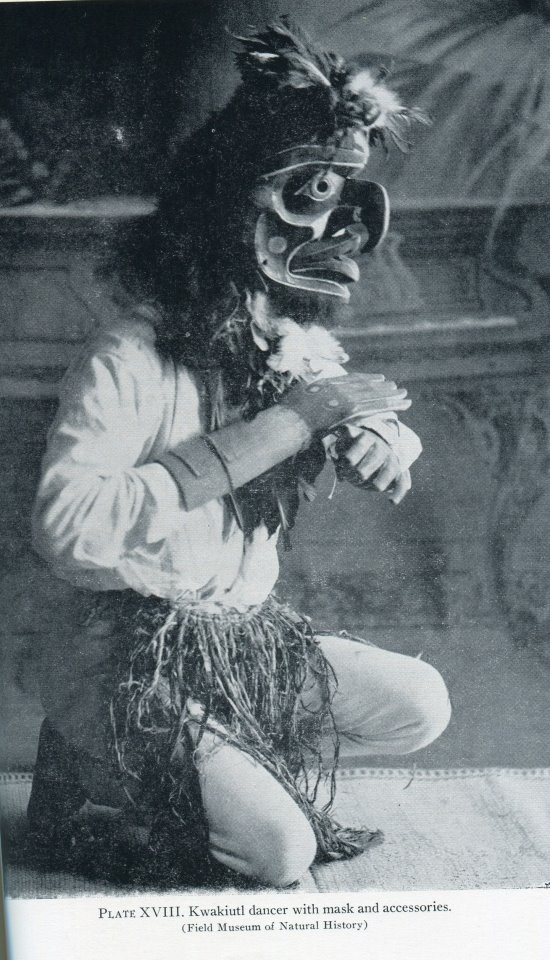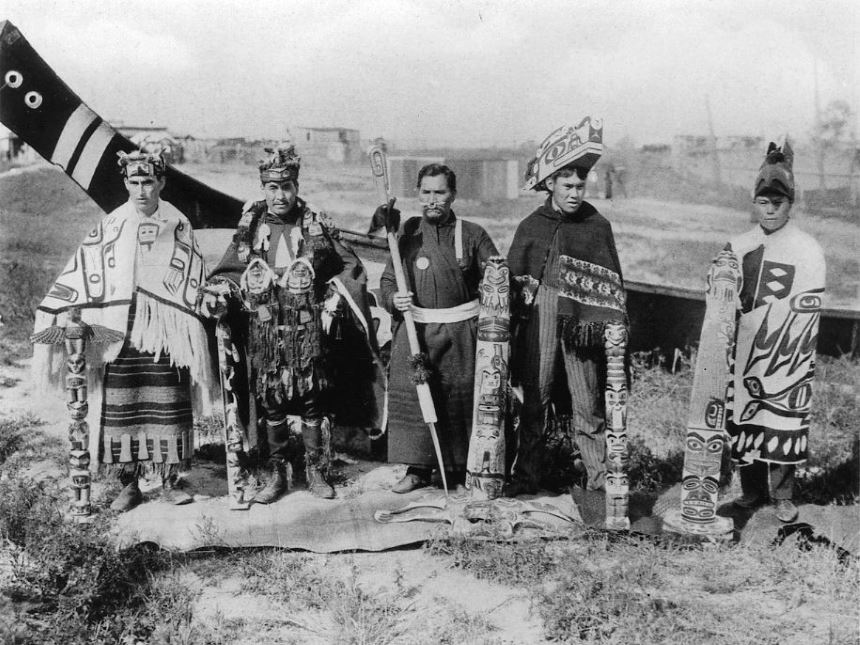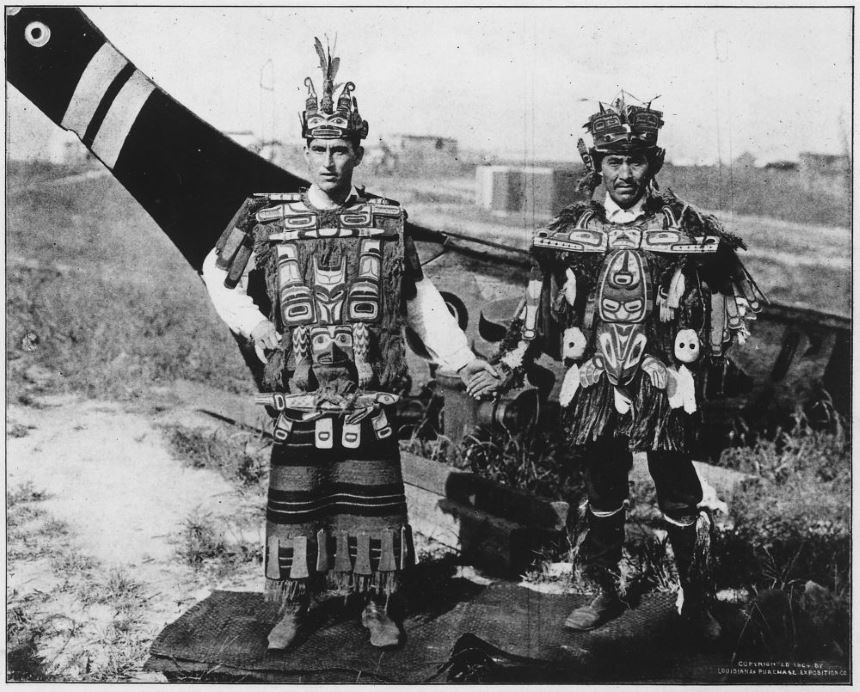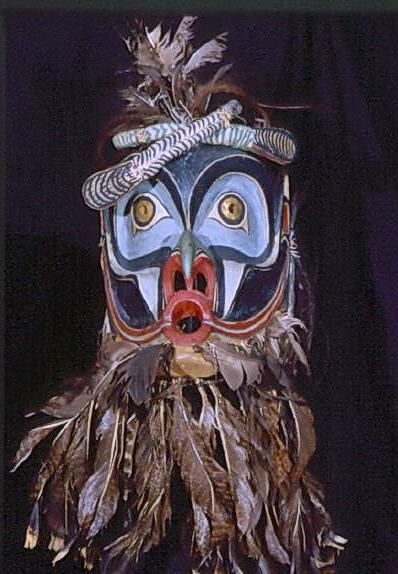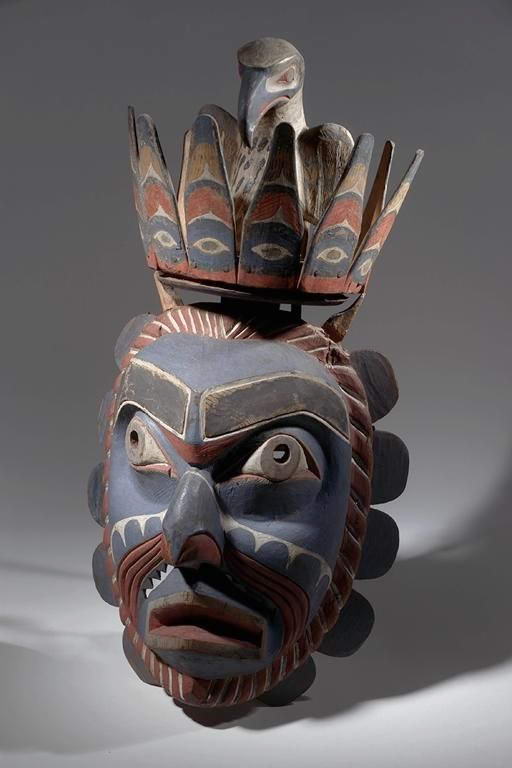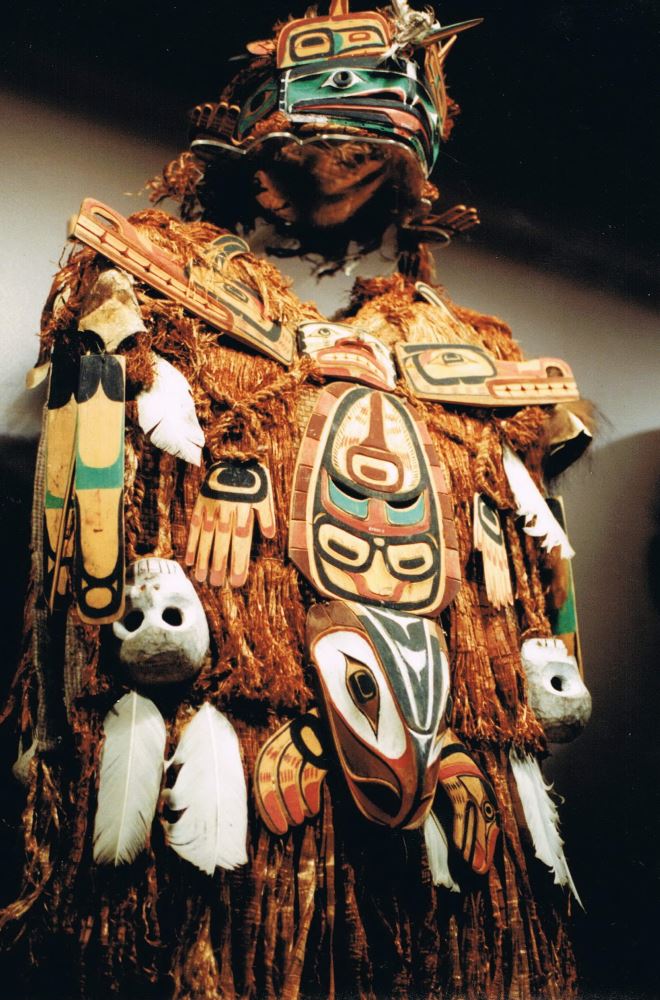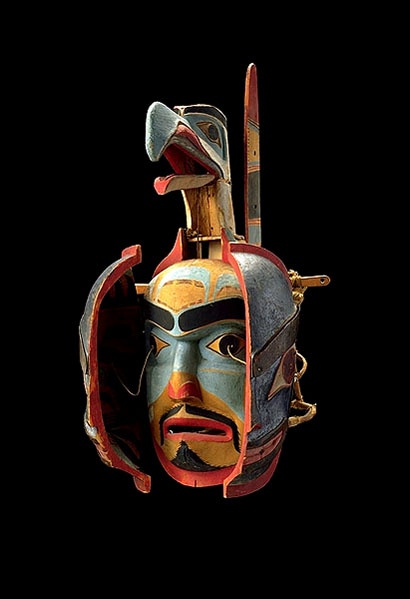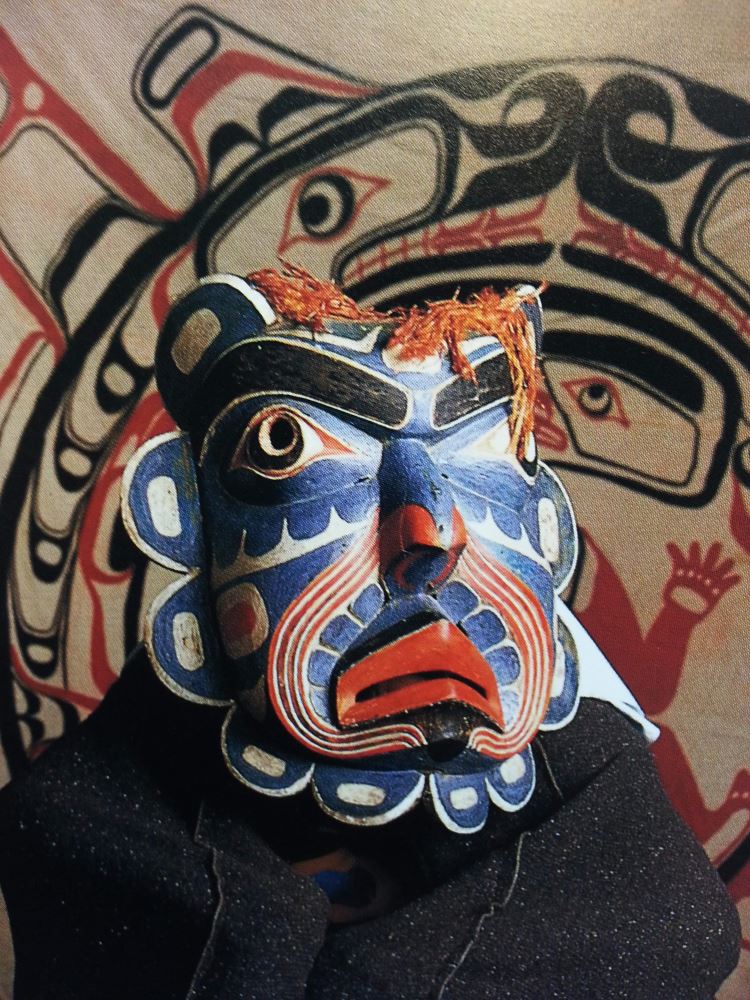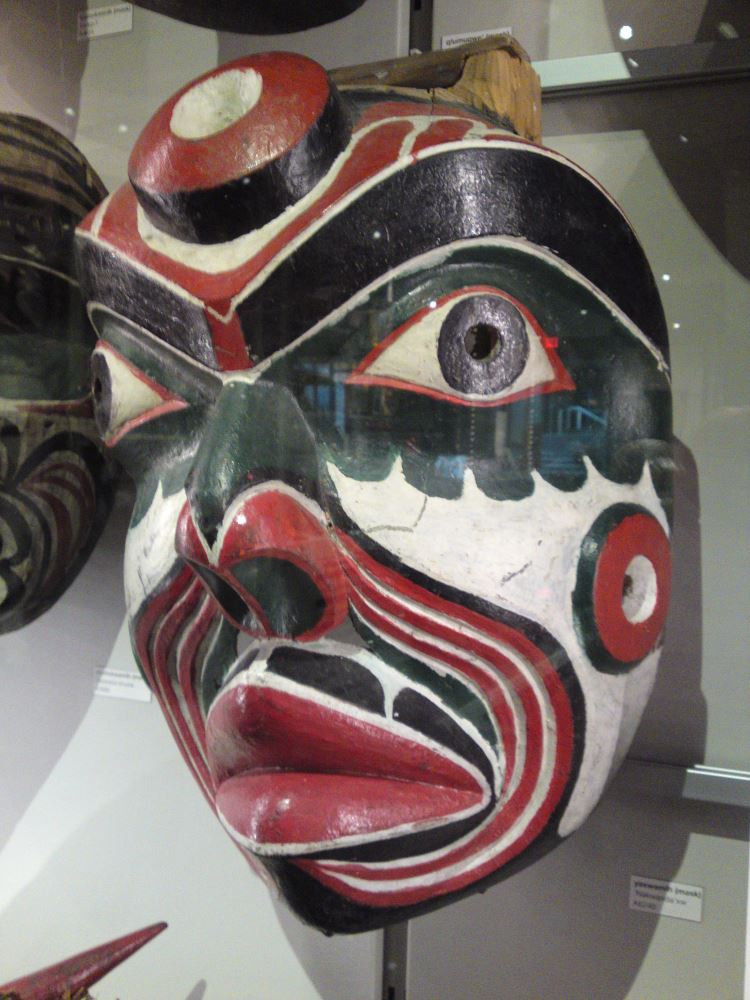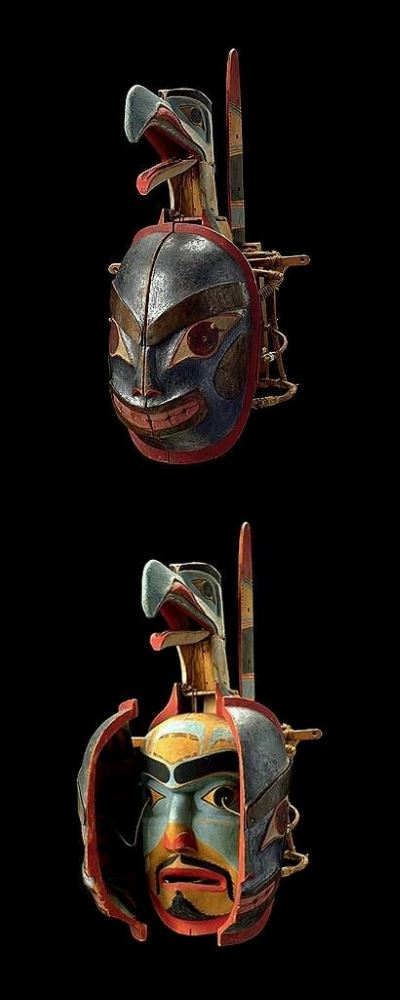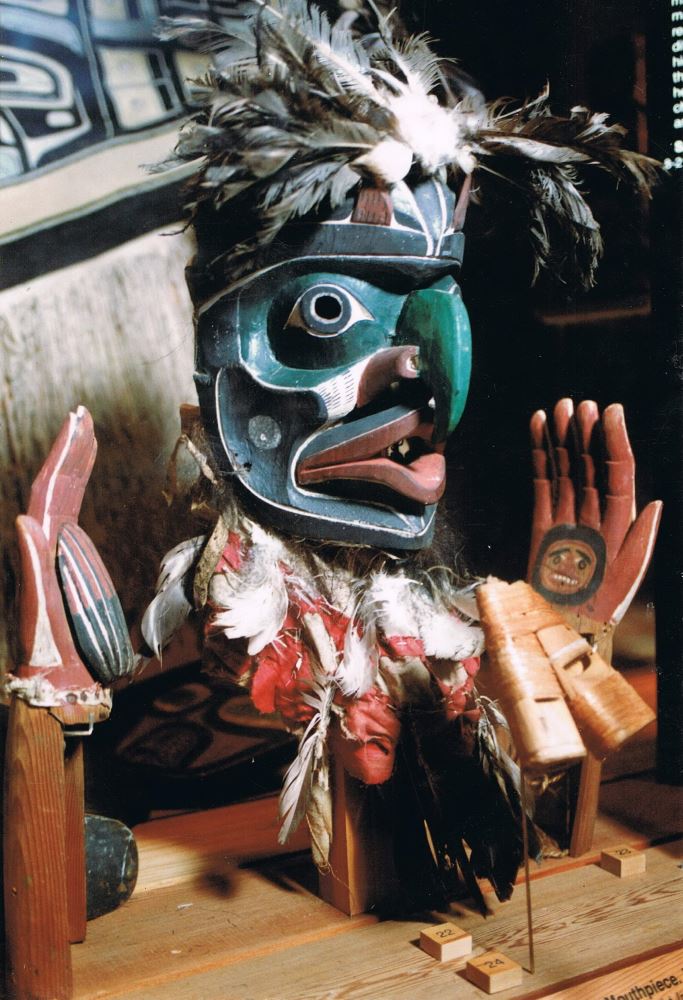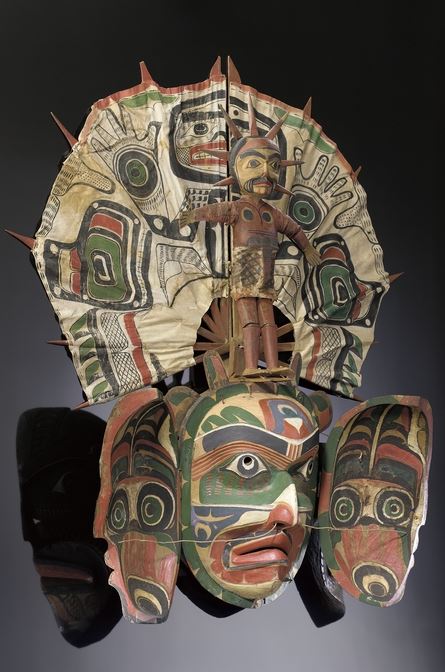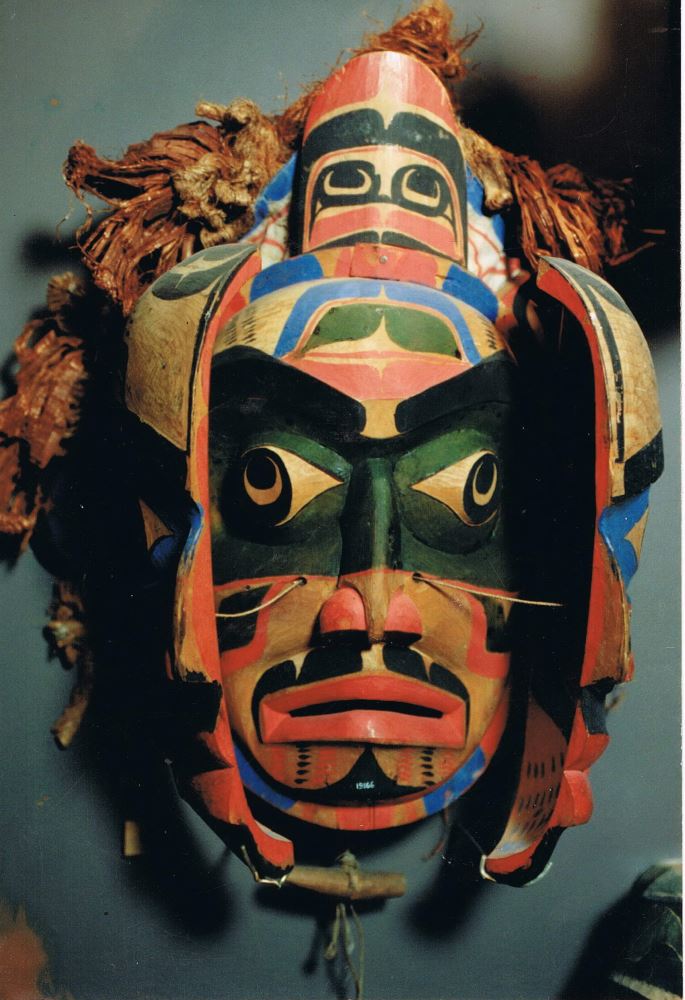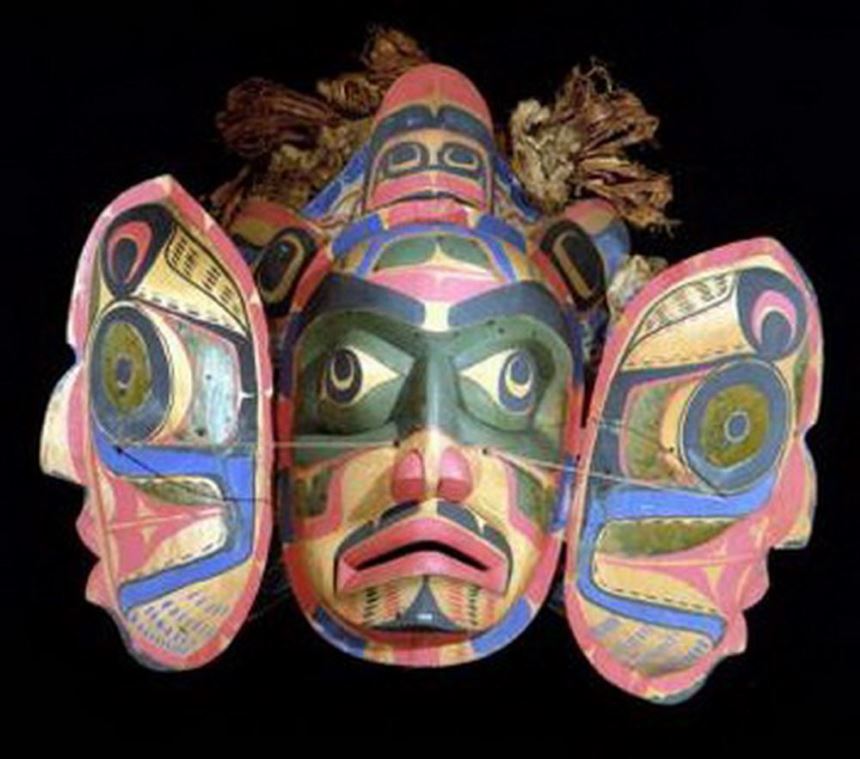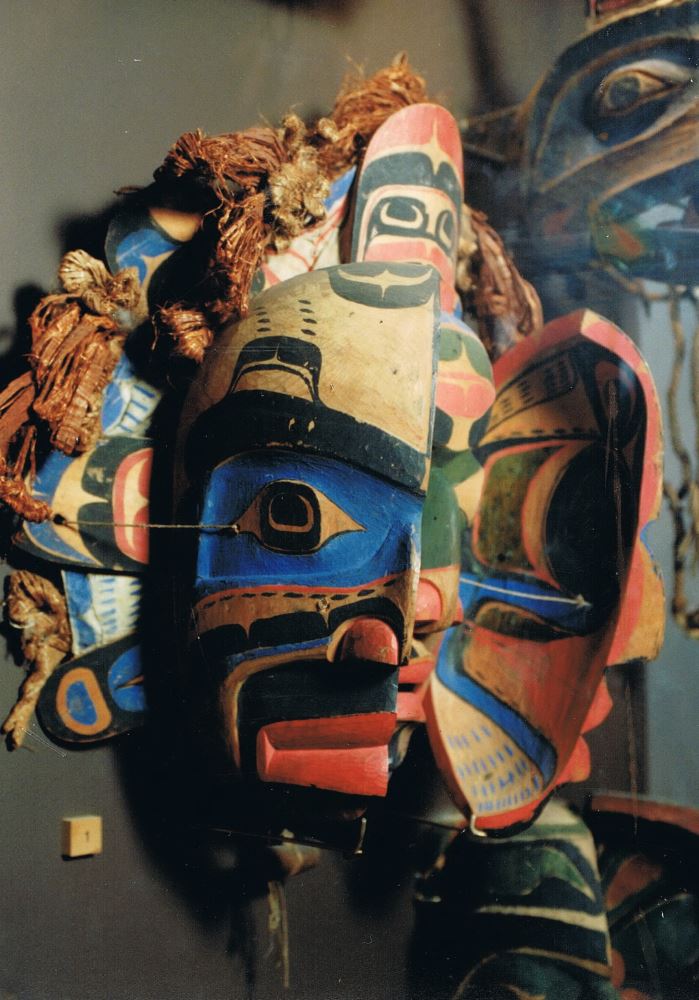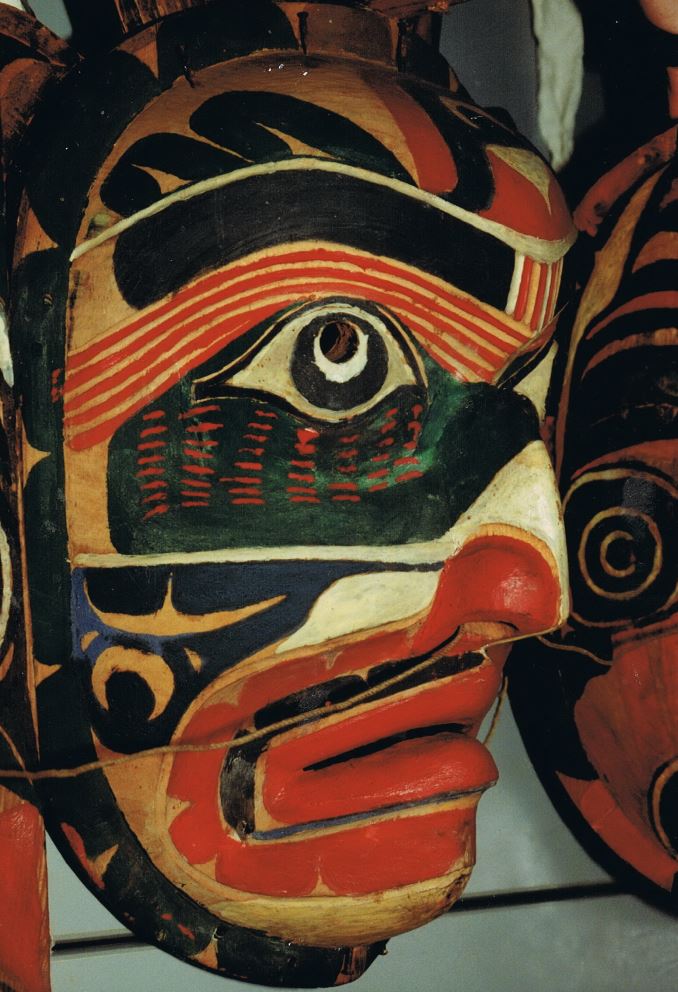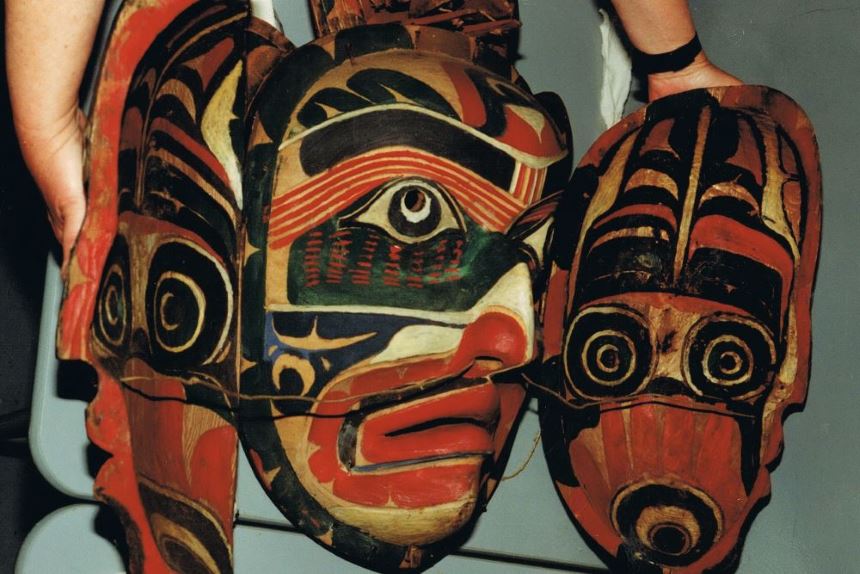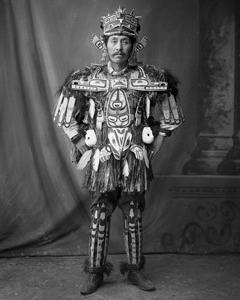
When you see the work of Kwakiutl artist, Bob Harris, you can't help but ask; how can this artist be unrecognized after so many years? His carvings are in many public collections and are illustrated in numerous books, often appearing without attribution. He has a strong personal style that is easily identifiable, and his body of work has helped define traditional North West Coast Native art. In looking at the pieces on this page, you may find that they appear familiar, archetypical even. Though the artist is something of an enigma, his work has been hugely influential, and well documented (only visually), though almost nothing about the man has been published.
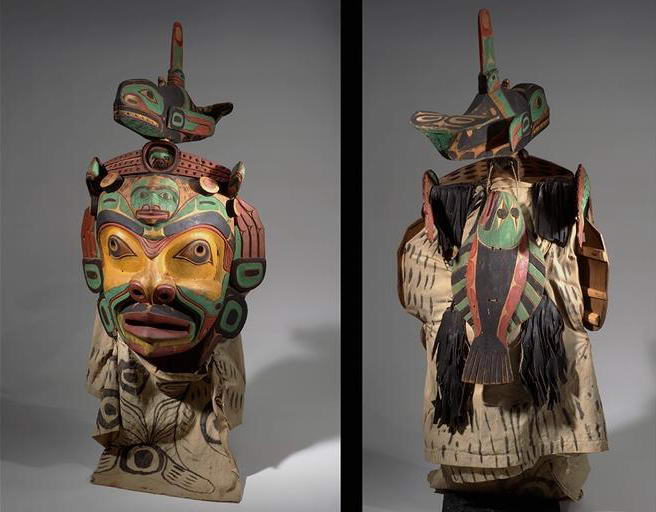
The Chicago Field Museum has a number of his best pieces in their collection, though, at the time of my research, they were not attributed to the artist and were displayed simply as 'Kwakiutl'. Some of those pieces were commissioned by museum in about 1904, when Harris was part of a group of Kwakiutl performers who appeared at the Saint Louis World's Fair, and his work was seen by an international audience. He was a talented dancer and singer and was active in Kwakiutl ceremonial life.
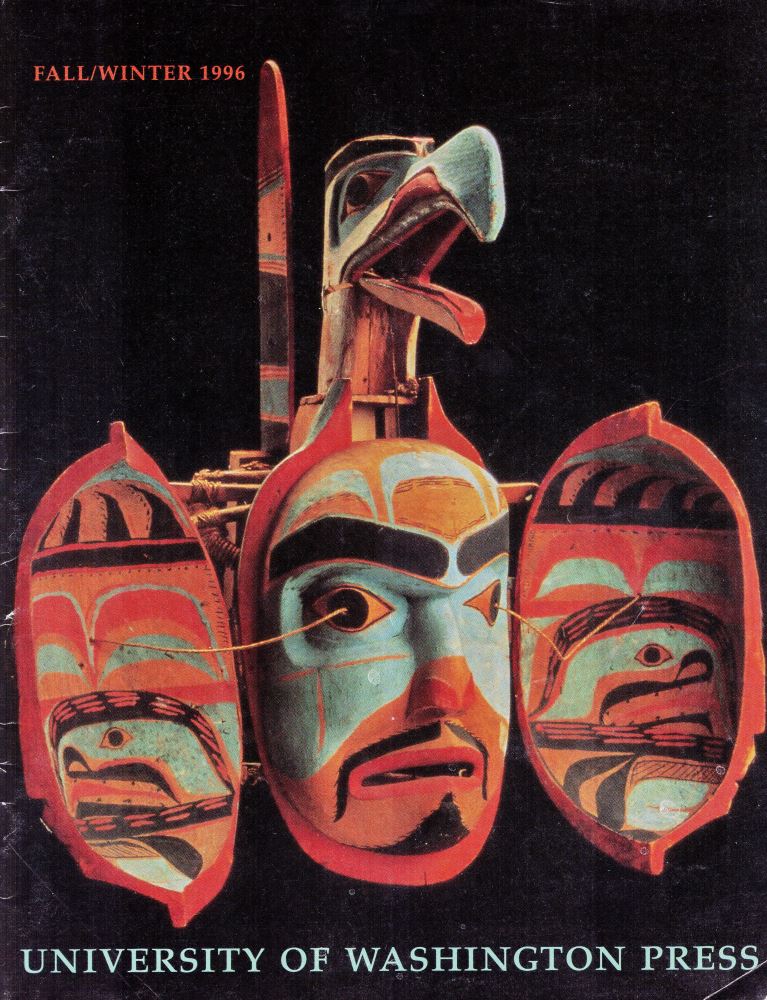
His traditional name was 'Xixa'niyus', which in English means: Always-Gives-All-His-Blankets-Away (the trade blanket was the medium of exchange within the potlatch for many years). He came from Knight Inlet clan called the Kamtalal, or the Song-Dancer-Clan. He married Tlak_we'l or Mary Mountain, who was from Village Island (a Kwakwaka'wakw village) on her mother's side, and her father was Nage or 'Mountain.' He was a Bella Bella chief, so a number of potlatch privileges (songs, dances and masks) were transferred to him, and remain among his Kwakiutl descendants. His daughter, Wadzidi, married Captain John Speck or Chief Udzistalis and their son was Chief Henry Speck or Galidi. So Bob Harris is the grandfather of well known Kwakiutl carver and painter Henry Speck.
